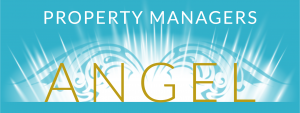With parts of the country blanketed in snow and extreme weather patterns causing flooding, it’s easy to feel the full force of winter upon us. Landlords play a significant role in keeping all New Zealanders safe and healthy by making their homes warm and dry.
Healthy homes standards for rental properties in New Zealand became law from 1 July 2019 as part of the Healthy Homes Guarantee Act. This legislation requires properties to comply with specific standards in five aspects: heating, insulation, ventilation, moisture ingress and drainage, and draft stopping.
Now, after the rental sector gave significant feedback, the Government has agreed to make changes to some standards. These changes came into effect on 12th May 2022 creating positive news for a lot of investment property owners
The changes apply to rental properties newly built to the 2008 building code requirements for insulation and glazing, properties where the insulation and glazing has been installed throughout so that it now meets or exceeds the 2009 standards and apartments in residential buildings of at least three stories with six or more units. Other properties still need to comply with the original Healthy Homes Standards
The changes don’t affect properties that already meet the Healthy Homes Standards. But for those that are yet to comply it’s important that landlords learn how these changes will impact them. They will change the obligations of some landlords and may significantly reduce their cost of compliance. They could also move a landlord’s compliance deadline.
The Changes
There have been changes in the standards for heating and ventilation, and some lenience in the requirement to install moisture barriers. In the main these changes soften the standards but only apply to properties with improved insulation and glazing. The regulators have better considered the efficiencies in these properties and accept that the desired result can be achieved with less heating and ventilation.
Heating
The formular for calculating the heating requirement in qualifying properties has changed. Generally, it allows for smaller heaters to be installed while still ensuring the living room can be heated to a minimum of 18° on the coldest day of the year.
Tenancy Services new heating assessment tool specifies the heating requirement for individual properties. https://www.tenancy.govt.nz/heating-tool/
Alternatively, a heating specialist can certify that the property meets the standards.
Other changes increase the transitional heating top-up allowance from 1.5kw or less to 2.4kw or less and accept that existing large living room heaters with 80% of the required heating capacity, as opposed to 90%, meet the heating standard.
They also now accept geothermal heating systems.
Ventilation
The original Healthy Homes Standards did not accept continuous mechanical ventilation systems Now the government makes an exception for dwellings that received their initial building consent on or after 1st November 2019, provided the mechanical ventilation system was part of the original building consent and continues to meet the requirement of that consent.
Moisture ingress and Drainage Standard
Landlords are now no longer required to install alternative moisture barriers where it is not reasonably possible.
The Healthy Homes Standards have been controversial amongst landlords although they do have landlord benefits. A certified compliant dwelling is likely to attract better tenants (it most certainly is becoming a requirement of new investors) and by making the property less prone to moisture and mould growth damage it could lead to lower maintenance costs.
Compliance
While there are some exemptions for some landlords, all landlords are required to ensure their properties meet the standards within 90 days of any new or renewed tenancy after 1st July 2021, or by 1st July 2024.
However, private landlords of dwellings that meet the criteria for the changes will have an extended compliance deadline. The 90-day grace period will be extended until 12th February 2023 when that is longer than 90 days.
Failure to comply with the healthy homes standards is a breach of the Residential Tenancies Act 1986 and offending landlords could be liable for exemplary damages of up to $7,200
Within the Healthy Homes Standards there are a myriad of variations and specific technical standards. The onus however is on the landlord to understand them and ensure total compliance.
Angel Property Managers are responsible for a significant portfolio of client’s properties, and we make it our business to be ahead of the game in all regulations. We engage the right specialist expertise to interpret information and connect with the wider industry to understand trends. We take the hassle out of compliance for our landlords while staying committed to ensuring our tenants are safe and healthy. Give us a call If you would like help determining your Healthy Home obligations.

